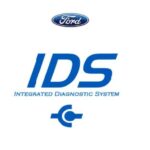Modern vehicles rely heavily on Electronic Control Units (ECUs) to manage various systems, from engine performance to safety features. Ecu Configuration, the process of customizing these control units, plays a vital role in optimizing vehicle functionality and addressing specific needs. This article delves into the intricacies of ECU configuration, exploring its significance and applications.
What is ECU Configuration?
ECU configuration involves adjusting the parameters and settings within an ECU to modify its behavior. This process can be accomplished through specialized software and hardware tools that allow access to the ECU’s memory. By modifying these settings, mechanics and technicians can fine-tune various aspects of the vehicle’s operation.
Why is ECU Configuration Important?
ECU configuration offers several crucial benefits:
- Performance Optimization: Adjusting fuel maps, ignition timing, and other engine parameters can significantly enhance a vehicle’s performance, leading to increased horsepower, torque, and fuel efficiency.
- Feature Enhancement: Configuration allows for enabling or disabling certain features, such as cruise control, traction control, or even specific driving modes. This customization enables tailoring the vehicle to individual preferences and requirements.
- Diagnostics and Troubleshooting: Accessing ECU data through configuration tools enables mechanics to diagnose problems more effectively and pinpoint the root cause of malfunctions. This streamlines the repair process and minimizes downtime.
- Emissions Control: ECU configuration plays a critical role in meeting emissions regulations. By adjusting parameters related to fuel delivery and combustion, technicians can ensure the vehicle complies with environmental standards.
- Vehicle Customization: For enthusiasts and racers, ECU configuration opens up a world of possibilities for customizing their vehicles. From adjusting shift points in automatic transmissions to modifying throttle response, the level of personalization is extensive.
How is ECU Configuration Performed?
ECU configuration typically requires specialized tools and software:
- OBD-II Scanners: These devices connect to the vehicle’s OBD-II port and provide access to diagnostic data and some configurable parameters. Advanced scanners often offer more extensive configuration options.
- ECU Programming Tools: Dedicated programming tools allow for flashing new software onto the ECU, updating its functionality and potentially adding new features.
- ECU Remapping Software: This software allows for modifying the ECU’s maps and tables, fine-tuning parameters for performance or efficiency gains.
ECU Configuration and Safety
It’s crucial to understand that improper ECU configuration can negatively impact vehicle safety and reliability. Modifying critical parameters without sufficient knowledge can lead to engine damage, compromised safety systems, and even void warranties. Therefore, ECU configuration should only be performed by qualified professionals with a thorough understanding of vehicle electronics and engine management systems.
The Future of ECU Configuration
As vehicles become increasingly sophisticated, ECU configuration will continue to evolve. We can expect to see more advanced software tools, cloud-based configuration platforms, and even wireless ECU updates in the future. This will make the process more accessible and efficient, further enhancing the capabilities of modern vehicles.
Conclusion
ECU configuration is a powerful tool for optimizing vehicle performance, enhancing features, and diagnosing problems. However, it’s essential to approach this process with caution and rely on the expertise of qualified professionals. As technology advances, ECU configuration will continue to play a vital role in shaping the future of the automotive industry.

